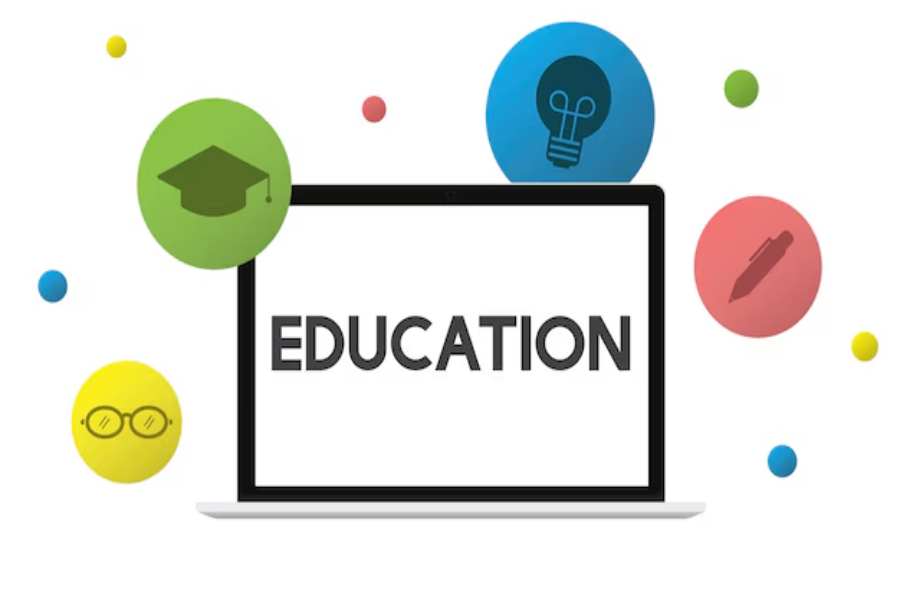The Benefits of Inquiry-Based Learning extend far beyond traditional teaching methods. This approach encourages students to play an active role in learning instead of simply absorbing information. By asking questions, examining ideas, and working through investigations, learners connect with subjects more deeply. This strengthens curiosity, sharpens thinking skills, and supports consistent academic growth. Inquiry-based learning also shifts the classroom from teacher-cantered lessons to student-driven progress. Rather than relying on memorization, students participate in building their own knowledge, which boosts comprehension and prepares them for more advanced learning.
In a world that values creativity and problem-solving, the Benefits of Inquiry-Based Learning help students handle challenges confidently. Through hands-on tasks, meaningful collaboration, and evidence-based reasoning, learners develop stronger analytical abilities. Schools using this method often see higher engagement, better retention, and more motivated students. This article explains why inquiry-based learning works, how it shapes classroom environments, and the ways educators can apply it effectively for long-term student success.
Inquiry-Based Learning: A Path to Active and Meaningful Education
Inquiry-based learning is an educational strategy that shifts the focus from memorization to active exploration. Unlike traditional teaching methods that rely on passive instruction, inquiry-based learning encourages students to take the lead in their educational experience.
At its core, inquiry-based learning involves students asking questions, conducting research, and drawing conclusions based on evidence. This method fosters a deeper understanding of topics because learners actively engage with the material rather than passively absorbing information. When students are allowed to explore real-world problems, they become more invested in their learning journey.
Another significant aspect of inquiry-based learning is its ability to develop essential 21st-century skills, including critical thinking, collaboration, and creativity. Whether in a classroom or professional setting, the ability to analyse, question, and problem-solve is essential for success. By promoting these skills, inquiry-based learning prepares students for future academic challenges and real-world applications.
Educators who implement inquiry-based learning see increased student engagement and motivation. When students feel they have control over their learning process, they become more curious, ask deeper questions, and develop a genuine interest in their studies. This sense of autonomy leads to better learning outcomes and higher retention rates.
Components of Inquiry-Based Learning
Student-Cantered Learning Approach
Inquiry-based learning places students at the canter of the educational process, encouraging them to take an active role in their learning journey. Unlike traditional teacher-driven instruction, this approach shifts the focus to student exploration, where learners engage with topics through research, questioning, and discussion. By allowing students to take ownership of their learning, this method fosters independence, motivation, and a deeper connection to the subject matter.
Emphasis on Critical Thinking and Problem-Solving
One of the primary benefits of inquiry-based learning is its ability to strengthen critical thinking and problem-solving skills. Instead of memorizing facts, students analyse real-world scenarios, evaluate different perspectives, and develop logical solutions. This approach moves beyond surface-level understanding, encouraging learners to think deeply and apply their knowledge in meaningful ways. By engaging in active problem-solving, students become better equipped to tackle complex challenges both in and outside the classroom.
Encourages Curiosity and Questioning
A core element of inquiry-based learning is the promotion of curiosity and questioning. Students are encouraged to ask meaningful questions, seek out answers, and explore topics through independent research. This process not only enhances their ability to think critically but also fosters self-directed learning, allowing them to develop lifelong skills in research and investigation. When students take the initiative to explore concepts on their own, they retain information more effectively and develop a natural enthusiasm for learning.
Hands-On and Collaborative Learning
Collaboration plays a significant role in inquiry-based learning. Students often work together in groups, discussing ideas, conducting experiments, and sharing their findings. This hands-on approach encourages teamwork and knowledge-sharing, allowing students to learn from one another while improving their communication skills. Engaging in collaborative projects helps learners develop a sense of responsibility and accountability, preparing them for real-world teamwork experiences.
Real-World Application of Knowledge
One of the greatest strengths of inquiry-based learning is its emphasis on real-world application. By connecting classroom concepts to practical situations, students gain a deeper understanding of how their learning applies to everyday life. This approach enhances adaptability, innovation, and creative thinking, helping students develop the skills needed to navigate real-world challenges effectively. When learners can see the relevance of their education, they become more engaged and motivated to explore new ideas.
How Students Grow Through Inquiry-Driven Learning Practices
- Enhances student engagement by making learning more interactive.
- Develops problem-solving skills through critical thinking exercises.
- Improves knowledge retention as students actively construct their understanding.
- Encourages creativity and innovation by allowing students to explore multiple solutions.
- Prepares students for real-world challenges by teaching them to analyse and adapt.
How Inquiry-Based Learning Differs from Traditional Methods
Traditional learning models rely heavily on direct instruction, where teachers deliver information, and students are expected to memorize content for assessments. This structured approach prioritizes factual retention but often limits students’ ability to engage critically with the material. While memorization plays a role in education, it does not always encourage deeper understanding or application of knowledge in real-world scenarios.
In contrast, inquiry-based learning shifts the focus from passive reception to active exploration. Students are encouraged to ask questions, investigate topics, and draw their conclusions rather than simply accepting information at face value. This approach fosters curiosity and critical thinking, allowing learners to engage with concepts more deeply and understand the reasoning behind the knowledge they acquire. Rather than memorizing for the sake of tests, students develop higher-order thinking skills, such as problem-solving and analytical reasoning, which extend beyond the classroom.
One of the greatest advantages of inquiry-based learning is its flexibility and adaptability. Traditional education often follows a rigid structure, with set lesson plans and little room for deviation. In contrast, inquiry-based learning allows students to approach problem-solving in multiple ways, giving them the freedom to explore different perspectives and strategies. This adaptability builds confidence and resilience, as students learn to trust their abilities and navigate challenges independently.
By encouraging active participation and real-world application, inquiry-based learning fosters lifelong learning habits. It prepares students not only for academic success but also for future careers and personal growth, equipping them with the skills necessary to analyse, adapt, and innovate in an ever-evolving world.
Strategies for Implementing Inquiry-Based Learning in Classrooms
- Design Open-Ended Questions: One of the most effective ways to foster inquiry-based learning is by designing open-ended questions that encourage students to explore multiple perspectives. Instead of seeking simple right-or-wrong answers, these questions require critical thinking, analysis, and reasoning. Well-structured inquiries push students to dive deeper into concepts, analyse different viewpoints, and construct well-supported conclusions. This method helps learners become more engaged and proactive in their educational journey.
- Promote Collaborative Learning: Collaboration is a crucial element of inquiry-based learning. Encouraging group discussions, research activities, and problem-solving tasks allows students to learn from one another while developing teamwork and communication skills. By working together, learners can challenge each other’s ideas, brainstorm creative solutions, and refine their understanding of concepts. Cooperative learning environments foster active engagement, leadership, and shared responsibility, making the learning process more dynamic and interactive.
- Provide Real-World Case Studies: Connecting lessons to real-world applications makes learning more relevant and meaningful. Educators can incorporate current events, industry-related case studies, and real-life problems to show students how theoretical knowledge applies outside the classroom. Whether discussing environmental issues, technological advancements, or business strategies, real-world case studies allow students to develop problem-solving skills while understanding the significance of their learning in everyday life.
- Encourage Reflection and Discussion: Self-reflection is an essential component of inquiry-based learning. Providing students with opportunities to evaluate their learning experiences allows them to identify strengths, areas for improvement, and personal insights. Educators can facilitate structured discussions and reflection activities, helping learners articulate their thoughts and refine their understanding. This process enhances self-awareness and deeper comprehension of the subject matter.
- Incorporate Technology and Digital Tools: Modern learning environments can be greatly enhanced by integrating technology and digital tools. Interactive platforms, online simulations, and multimedia resources provide engaging ways for students to explore and interact with concepts. Using educational apps, virtual labs, and data-driven tools helps students visualize complex topics and develop hands-on experience in digital learning environments. By incorporating technology, educators can create immersive and dynamic learning experiences that cater to different learning styles.
Final Thoughts
The benefits of inquiry-based learning extend far beyond the classroom. This method cultivates critical thinkers, independent learners, and problem solvers who can navigate the complexities of an evolving world. By fostering curiosity, engagement, and real-world application of knowledge, inquiry-based learning prepares students for success in both academic and professional settings.
As educators continue to seek innovative ways to enhance learning experiences, inquiry-based learning remains a powerful tool that empowers students to take charge of their education and develop a lifelong passion for learning.
FAQ’s
What is inquiry-based learning?
Inquiry-based learning is an approach where students explore topics through questions, research, and critical thinking instead of relying on direct instruction.
How does inquiry-based learning improve student engagement?
By allowing students to actively participate in their learning process, it fosters curiosity, motivation, and deeper understanding.
What role do teachers play in inquiry-based learning?
Teachers act as guides by supporting student questions, offering resources, and helping learners build strong reasoning skills without controlling every step.
How is inquiry-based learning different from traditional teaching methods?
Traditional methods focus on memorization and direct instruction, while inquiry-based learning encourages exploration, discussion, and real-world application.
Can inquiry-based learning be used in all subjects?
Yes, this method is effective in science, mathematics, history, and even creative subjects, as it helps students develop analytical and independent thinking skills.












































Leave a Reply